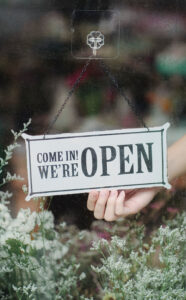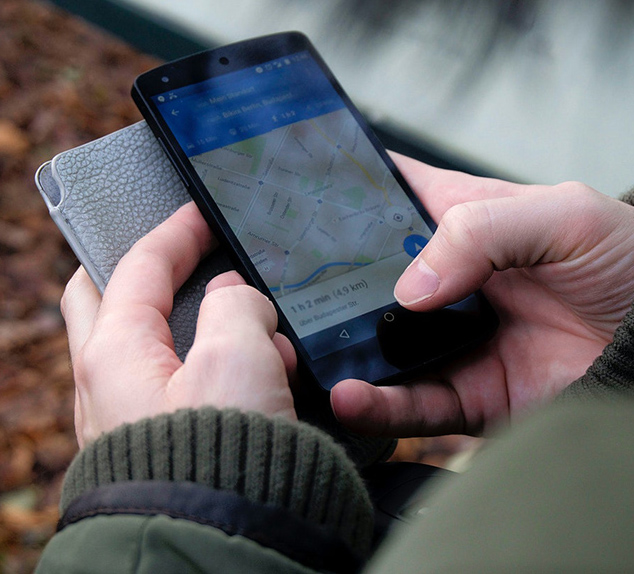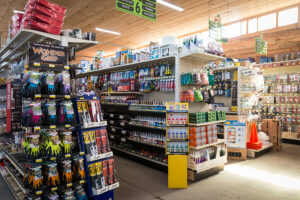How to Build Your Best Retail Experience
We believe retail is merely evolving, though, and enterprising store owners are changing the way they do business to adapt to the new dynamics. They’re heightening the focus on customer service and building their best retail experience possible using technology and data to create fun, informative and interactive options for shoppers.
Here are some ways to excite and entertain your customers, and join the retail evolution.

Make Your Store a Shopping Destination
Many of the large hardware retailers like Home Depot and Lowe’s long ago began building their best retail experience by demonstrating new products and tools and offering do-it-yourself workshops. Ulta is an example of a beauty products retailer that has been increasing its business by including hair salons and offering facials and makeovers in their stores. Likewise, Nike has attempted to lure online customers to its retail stores by hosting training sessions and organizing running clubs.
Many independent hardware store owners across the country are taking their businesses to new heights by enhancing their customers’ buying experiences, too.
A perfect example is McGuckin Hardware in Boulder, Colorado, which expanded its 60,000-square-foot facility to include 18 different departments. It now attracts customers from all over the Boulder Valley with what Steve Wilke, communications and marketing specialist, calls “shoppertainment.” In addition to the expansion, McGuckin holds sales events that draw even more people to the store.
“Every year in September, we set up a 5,000-square-foot holiday aisle,” Wilke tells Hardware Retailing. “The Holiday Shop has everything from international ornaments to nutcrackers from the Black Forest in Germany. We bring in a violinist, harpist and cellist who park right in the middle of the store to play Christmas carols and rock ‘n’ roll covers for shoppers.”
McGukin, which has been in business since 1955, has been holding tent sales twice a year for nearly 40 years, once in the spring and once in the fall. The sales feature specialty items that buyers collect throughout the year, and they’ve become prominent community events.
“Our tent sale, especially the spring one, is the landmark sale,” Wilke says. “The sales run Thursday through Sunday, and we get a permit from the City of Boulder to put up a huge tent in the parking lot.”
Marcus Lumber Company in Marcus, Iowa, has a similar story about increasing its business by building its best retail experience. A 2004 fire nearly destroyed the 137-year-old business, but instead of packing it in, Grant Leavitt, a fourth-generation owner, packed it up and went on a road trip of discovery.
Leavitt and his family learned from some of the leading independent hardware stores throughout the Midwest – Fox Home Center (Alsip, Ill.), Millard Lumber (Omaha, Neb.), Hartville Hardware (Hartville, Ohio) and Keim Lumber Co. (Charm, Ohio) – before they reopened as a destination retail experience.
“All the stores we visited provided us with great examples of things we wanted to implement in our showroom,” Leavitt told Hardware Retailing. “Many of these businesses were larger than ours, but they gave us many great takeaways and provided us with the chance to connect to other retailers and take note of ideas that were implemented into our operation.”
The Leavitts built their business into one that can serve the basic hardware needs of their neighbors and attract professional builders or serious do-it-yourselfers who willing to drive to visit a home improvement center. Their showroom features a kitchen center with everything from countertops to appliances, a window center, exterior models with siding, stone and composite decking, and a door department that features 80 different types of interior and exterior doors.
Enhancing with High Tech
Retailers can use technology to enhance their store by connecting physical and digital shopping into one “omnichannel” experience. Many retailers make Wi-Fi available to shoppers who utilize their mobile phones to access product information or compare similar items.
In-store Bluetooth beacons, which can alert shoppers who are near featured products and offer them product information or special offers, are another way to reach out and engage customers while they’re shopping. Chuck Martin, editor of the MediaPost mCommerce Daily, recently called in-store beacons “the missing piece in the whole mobile-shopping experience.”
“The technology is essentially invisible and can work without the mobile consumers having to do anything – usually a major hurdle for any mobile shopping technology. The shopper only has to agree in advance to receive such messages as they shop,” he wrote in the Harvard Business Review. “So, imagine walking by or into a store and receiving a text message triggered by a beacon at the store entrance. It alerts you that mobile shoppers are eligible for certain deals, which you can receive if you want. Assuming you accept, you begin receiving highly relevant messaging in the form of well-crafted, full-screen images based on what department or aisle you are strolling through at the moment.”

Geofencing, a location-based service that sends text message alerts to shoppers near a store, is another way to draw in new customers using technology.
Effective retail software solutions can make these sales floor technological enhancements easy to implement and manage. Many point of sale systems today integrate marketing solutions with their sales data to improve their customers’ shopping experience.
In the 2017 Connect Shoppers Report from Salesforce, 34% of shoppers say they have used a mobile device to research a product while inside a store. It’s not a shock that millennials (ages 18-36) and Generation Xers (37-52) combine to make up the majority (88%) of those shoppers. It’s also not a surprise that over half of millennials feel that because of their research they know more about the products they’re buying than the people selling them.
While retailers aim to have store associates offer expert advice on their products, arming them with technology is another way to improve their customer service. That trend on the rise, too. Of the 2,000 shoppers surveyed in the Connected Shoppers Report, 23% of millennials, 17% of Generation X shoppers and 14% of Baby Boomers said store associates had assisted them using a mobile device.
Whether or not it includes arming sales associates with high tech, providing outstanding customer service cannot be more important to merchants looking to build their best retail experience. People shop where they feel comfortable, and store associates who are willing to go the extra mile, even if it means researching a question on the internet, builds customer loyalty.
The 2016 POS Survey by Boston Retail Partners, a retail and restaurant consulting company, shows that 62% of retailers plan to increase their use of mobile devices by the end of 2019, and 81% plan to have a unified commerce platform that includes point of sale, mobile devices and web technology by the end of 2020.
The report also shows that retailers want to better identify their repeat customers and take steps to offer them discounts and special recognition such as birthday and anniversary greetings. Within the next three years, 67% of those surveyed said they would institute a customer loyalty program and 63% plan to use mobile apps to identify customers in their stores.
Loyalty programs offer businesses a variety of benefits they can’t buy. They utilize sales data and technology to foster good relationships with a retailer’s best customers by personalizing the shopping experience and streamlining marketing efforts.

As the number of shoppers using mobile devices increases, so does the amount of information offered by retailers. Approximately 60% of retailers offer product information, 57% provide prior-purchase data, and 54% offer mobile coupons or promotions.
That kind of personal attention and customization are what shoppers are seeking. Sparked by the popularity of personalization options from Amazon, shoppers across the board appreciate product recommendations based on their buying history. Point of sale systems with integrated sales and marketing technologies that include customer loyalty programs offer that kind of customization.
Voice-activated informational kiosks, product demonstration displays and do-it-yourself videos are other ways to enhance sales floor shopping with technology.
Merchandising Still Matters
Merchandising is not a new concept, but it is important in keeping a sales floor looking fresh and inviting. And it does affect a store’s retail experience. Hardware Retailing offers four reasons retailers should focus their attention on merchandising.
Customer Satisfaction
Improved Price Images
More Profitable Sales Floor
Productive Employees
Many retailers in the same industry tend to market to the same customers. Retailers should look to reach untapped markets such as teens, students, stay-at-home parents or retirees to expand their business.
Having the right quantity of the right products on the shelves at the right time of the year is crucial to good merchandising, and comprehensive sales and building your best customer experience. Inventory technology can make that process easier and more effective.

All these merchandising techniques and technological enhancements are aimed at building customer retention and reaching out to new shoppers. Merchants must find the products customers are seeking, stock and merchandise them effectively, and sell them at an attractive price to gain an advantage over the competition.
Experienced business technology partners can help retailers accomplish this by implementing intuitive software solutions that help them forecast buying trends and meet shopping demands. Those same solutions can manage customer loyalty programs and reach out to new customers and existing customers through integrated marketing programs.
Whatever your strategy is for building your best customer experience, improving your store’s retail atmosphere with physical or technological enhancements should be part of the plan. You can thrive by making your store a fun, interactive and digitally seamless shopping experience.
Brian Bullock
Author


